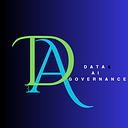Challenges and Solutions when Dealing with Demographic and Highly Sensitive Data
Demographic data and highly sensitive data, such as financial or medical data, present unique challenges when it comes to collection, use, and protection. In this post, we will explore some of these challenges and discuss some potential solutions.
Challenges
One of the main challenges when dealing with demographic data is ensuring that it is used in a fair and non-discriminatory manner. This can be difficult because demographic data can be used to make assumptions about individuals and their characteristics, which can lead to discrimination.
Another challenge when dealing with highly sensitive data is protecting the privacy of individuals. This data is often subject to strict privacy laws and regulations, such as the General Data Protection Regulation (GDPR) in the European Union (EU) and the Kenya Data Protection Act of 2019 in Kenya.
Solutions
There are several solutions that businesses and organizations can implement when dealing with demographic and highly sensitive data:
- Encrypting data: Encrypting data is a way of scrambling the data so that it is unreadable to anyone who does not have the decryption key. This can help to protect data from being accessed by unauthorized individuals.
- Data masking: Data masking is a technique for obscuring sensitive data, such as PII, while still allowing data scientists to work with the data. This can be useful for allowing data scientists to work with real data while protecting the privacy of individuals.
- Data anonymization: Data anonymization is the process of removing or obscuring PII from data in order to protect the privacy of individuals. This can be a useful technique for allowing data scientists to work with sensitive data without compromising privacy.
- Implementing access controls: Access controls are a way of limiting who can access data and how they can access it. This can include setting up user accounts and permissions, as well as implementing measures such as two-factor authentication.
- Ensuring compliance with relevant laws and regulations: It is important for businesses and organizations to ensure that they are compliant with relevant laws and regulations when dealing with demographic
Solutions
- Ensuring compliance with relevant laws and regulations: It is important for businesses and organizations to ensure that they are compliant with relevant laws and regulations when dealing with demographic and highly sensitive data, such as the GDPR in the EU and the Kenya Data Protection Act of 2019 in Kenya.
- Establishing data governance policies: By establishing clear policies for data governance, businesses and organizations can ensure that demographic and highly sensitive data is used in a consistent and transparent manner, and that the privacy of individuals is protected.
- Implementing data governance tools: There are various tools available that can help businesses and organizations to implement data governance, such as data governance frameworks, data catalogs, and data lineage tools.
- Implementing data management tools: There are various tools available that can help businesses and organizations to manage demographic and highly sensitive data, such as data modeling tools, data storage systems, and data integration platforms.
- Ensuring data backup and recovery: It is important for businesses and organizations to have a plan in place for backing up and recovering demographic and highly sensitive data in the event of a disaster or data loss.
Conclusion
Dealing with demographic and highly sensitive data presents unique challenges, including ensuring fair and non-discriminatory use, protecting the privacy of individuals, and complying with relevant laws and regulations. By implementing the solutions discussed above, businesses and organizations can better address these challenges and ensure the security, governance, and management of their data.
